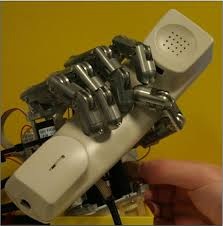The artificial hand that “feels” like a real one

Related topics
Health ICT Research & Innovation Innovation Health, Demographic Change and Wellbeing Denmark Ireland Italy Sweden Iceland Israel Nanotechnologies, advanced materials, advanced manufacturing & processing, and biotechnologydate: 26/09/2014
Project: The smart Bio-adaptive Hand prosthesis
acronym: SMARTHAND
See also: CORDIS
Contact: Contact
The SmartHand project succeeded in developing a system that essentially tricks the brain into thinking that a real hand is attached to a person’s arm.
“What for decades has been one of medicine’s greatest challenges, we are now one step closer to solving,” says SmartHand coordinator Fredrik Sebelius of Lund University in Sweden. “This offers hope to amputees for a more functional artificial hand,” he adds.
Sebelius led a team that combined neuroscience, biotechnology and information technologies to develop an artificial hand that patients were able to experience, to some degree, as their own.
Key to the breakthrough is the phenomenon by which amputees imagine that their missing hand is still there – to the point that they feel what is known as “phantom sensation.” Even if a person’s hand is missing, the “hand area” is still present in the brain. This means an amputee can still imagine that the missing hand is moving.
“The artificial hand we developed can actually be controlled by an amputee’s thoughts,” says Sebelius. “If a person thinks about opening or closing their hand, these signals are sent to the prosthetic hand – and the fingers move accordingly.”
In another intriguing effect, touching a certain part of an amputee’s arm can be perceived as touching the missing hand. The SmartHand team developed a system that can stimulate this “phantom map,” with the result of causing sensation in the missing hand.
The brain’s connection to the missing hand is so strong that it can be tricked into believing that the prosthetic hand is real. Amputees who tested the SmartHand “felt” that the hand was being touched and experienced the illusion that it was their own. They even began to sweat when the artificial hand’s rubber skin was poked with a needle.
The SmartHand device is equipped with a number of small motors that allows each finger to move separately, as well as sensors that control how hard the hand grips an object.
“We have designed and produced an artificial hand that gives a person a realistic sensation of having a natural hand,” says Sebelius.
Even beyond the physical disability that amputees suffer, many must also deal with depression, a distorted self-image, and the fear of social rejection. Moreover, phantom pains, which do not ease over time, often require people to take pain medication.
Up until recently, artificial hands provided only limited benefits. They could only move in simple ways, had no sensory abilities, needed heavy batteries, and were difficult to keep clean. As a result, many amputees chose not to use them. “What we have developed could truly help people overcome these difficulties,” concludes Sebelius.
